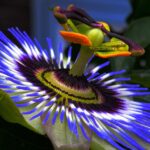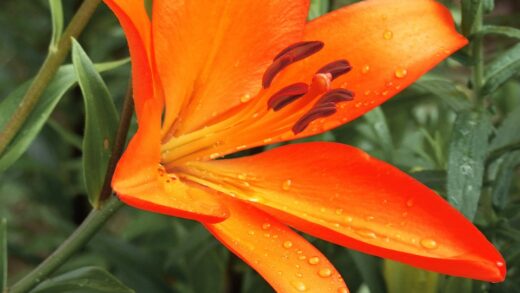The Phalaenopsis, more commonly known as the moth orchid, is one of the world’s most popular houseplants, gracing many homes with its elegance and long-lasting blooms. However, for this tropical beauty to display its best form year after year, proper care is essential, and one of the most critical elements of this care is precisely meeting its light requirements. Light is not just the energy source necessary for growth but also the most important signal that triggers flowering, so correctly understanding and adjusting light conditions is the cornerstone of successful orchid cultivation. Without it, the plant may survive, but the desired floral splendor will not materialize, and the condition of the leaves will deteriorate. Accustomed to the filtered, dappled light of the tropical forest understory on tree canopies in their natural habitat, we must create similar conditions for moth orchids in our homes.
Moth orchids perform CAM (Crassulacean Acid Metabolism) photosynthesis, which is a special adaptation to their epiphytic, or tree-dwelling, lifestyle where access to water can be intermittent. This process allows them to open their stomata at night, when transpiration is lower, to take in carbon dioxide, which they store in the form of malic acid. During the daylight phase, they use this stored carbon dioxide for photosynthesis with their stomata closed, minimizing water loss. Light energy is essential for this second phase, the production of sugars and other organic compounds necessary for the plant’s growth and flowering. Inadequate light inhibits this complex biochemical process, leading to a general decline in the plant’s health.
The quality and spectrum of light also play an important role. Photosynthesis primarily requires red and blue wavelength light, while green light is reflected by the leaves, which is why we see them as green. Natural sunlight provides the full spectrum, but in indoor cultivation, especially with artificial lighting, care must be taken to select a light source with the correct spectrum. Using non-full-spectrum or improperly balanced light sources, even if they seem to provide sufficient brightness, means the plant cannot utilize it effectively. Therefore, modern, full-spectrum LED grow lights are the best solution for supplementing or replacing natural light.
Light conditions also have a direct impact on the plant’s morphology, or its physical characteristics. In strong but not scorching light, the leaves of a moth orchid will be firm, slightly upright, and a healthy olive-green color. In contrast, in low light conditions, the leaves will turn dark green, elongate, and droop as the plant tries to maximize its light-absorbing surface area. Under excessively strong, direct sunlight, the leaves can turn yellowish-green or even take on a reddish hue, which is the plant’s defensive reaction to excessive light stress. These visual cues provide reliable feedback on the adequacy of the growing conditions and help in making necessary corrections.
Factors influencing flowering
The most important trigger for the flowering of moth orchids is the right amount and quality of light. Although the plant can exist vegetatively, meaning it grows leaves and roots, in lower light conditions, higher light intensity is essential for producing a flower spike and developing buds. The optimal amount of light provides the necessary energy surplus during photosynthesis, which the plant can invest in reproductive processes, i.e., flowering. In a light-deficient environment, the plant directs all its energy towards survival and maintaining its leaves, so flowering does not occur. This is the most common reason why a purchased, blooming orchid fails to produce new flowers the following year.
More articles on this topic
In addition to light, the difference between daytime and nighttime temperatures also plays a role in flower induction. A few weeks of a nighttime temperature drop of about 5-8 degrees Celsius, coupled with abundant light, signals the plant to begin forming a flower spike. This simulates the changing of rainy and dry seasons in their natural habitat. In a home environment, this temperature fluctuation can occur naturally in the autumn before the heating season begins if the plant is kept near a window. Orchids kept in a room with a stable, constant day and night temperature are more difficult to induce to flower, even with adequate light conditions.
The duration of light, or the photoperiod, also affects the flowering cycle. A daily illumination of 12-14 hours is ideal for moth orchids. During the winter months in temperate zones, when the duration of natural daylight is significantly reduced, the plant may tend to enter a sort of dormant state. In such cases, the supplementary use of artificial lighting can help maintain the photoperiod and light intensity necessary for flowering. A simple grow light equipped with a timer can work wonders, ensuring a consistent daily cycle, which is essential for the proper functioning of the plant’s biological clock.
The overall health and nutritional status of the plant are also fundamental prerequisites for flowering. A weakened orchid struggling with pests or diseases, or one suffering from a nutrient deficiency, will not flower, even under ideal light conditions. Light provides the energy, but the “building blocks” needed to construct the flowers are supplied by proper watering and balanced, phosphorus-rich, flowering-promoting fertilizer. Successful flowering is thus the result of a complex process where light, temperature, water, and nutrients are in harmonious balance.
The secrets of ideal placement
In a home environment, the most ideal place for a moth orchid is a bright windowsill that is protected from direct, scorching sun. The best choice is usually an east-facing window, where the plant receives the early morning sun, which is not yet too strong but provides enough energy for the rest of the day. A west-facing window can also be a good option, but the afternoon sun here is much more intense, so shading, such as using a sheer curtain, may be necessary, especially during the summer months, to prevent leaf burn. Shading blocks direct sunlight but allows enough diffused light to pass through.
More articles on this topic
South-facing windows present the greatest challenge, as they receive the strongest and most intense light throughout the day. A moth orchid should only be placed here if significant shading can be provided, or if the plant is positioned at least one or two meters away from the window. Direct southern sun will almost certainly cause burns on the leaves, which appear as brown, dry spots and represent permanent damage. North-facing windows generally do not provide enough light for flowering; the plant may survive, but its leaves will be dark green, and it will likely not produce a flower spike.
Seasonal variations in light demand must also be considered. During the winter months, when the number of sunny hours is fewer and the sun’s angle is lower, the plant can be moved closer to the window, or a south-facing windowsill may be temporarily suitable. In spring and summer, as the sun’s strength increases, the plant must be moved further from the glass again, or shading must be provided. When changing the plant’s location, always observe the reaction of the leaf color, as this is the best indicator of whether the orchid feels comfortable in its new spot.
The color and posture of the leaves are the most reliable feedback on the adequacy of light conditions. The ideal, slightly olive-green color indicates that the amount of light is just right. If the leaves are too dark green, it clearly points to a lack of light, in which case a brighter location should be found for the plant. If the leaves are yellowish, or possibly have a reddish tint, it is a sign of excessive light, which can harm the plant in the long run. Finding the right balance is crucial for maintaining the plant’s long-term health and willingness to flower.
The application of artificial light sources
There are cases where natural light is simply not sufficient for the successful cultivation of moth orchids, such as in a north-facing room, a windowless bathroom, or during the dark winter months. In such situations, artificial lighting provides an effective and reliable solution to compensate for the lack of light. Thanks to modern technology, there are now many lamps specifically designed for plant cultivation that can simulate sunlight. Using these, we can create optimal light conditions for our orchids anywhere, under any circumstances, making ourselves independent of the limitations of natural light.
The most common and effective solution today is full-spectrum LED lamps. These light sources are low in energy consumption, produce minimal heat so they do not burn the plant’s leaves, and have a long lifespan. “Full-spectrum” means that in addition to the blue and red light wavelengths, they also contain other colors similar to sunlight, which is necessary for the healthy, balanced development of plants. For smaller collections, a single, height-adjustable LED panel or a special E27 socket-compatible LED bulb may be sufficient.
The correct placement of the artificial light source and setting the duration of illumination are crucial. The lamp should generally be placed above the plant, about 20-30 centimeters away from the leaves, to ensure the light reaches all parts of the plant evenly. The ideal illumination period is 12-14 hours per day, which can be most easily ensured with a mechanical or digital timer. Using a timer guarantees consistency, which is essential for maintaining the plant’s circadian rhythm, or internal biological clock, and thus for stimulating flowering.
Even when using artificial lighting, the plant’s reactions must be constantly monitored. If the leaves start to turn yellow or red, the lamp is likely too close or too strong, in which case the distance should be increased. If the leaves remain dark green and growth is slow, the light source is too far away, or the duration of illumination is too short. Advanced orchid growers can also check the light intensity with light meter apps or devices (lux meters), for which the optimal value for moth orchids is between 10,000 and 15,000 lux. The proper use of artificial light allows the moth orchid to remain active and capable of flowering all year round.


















